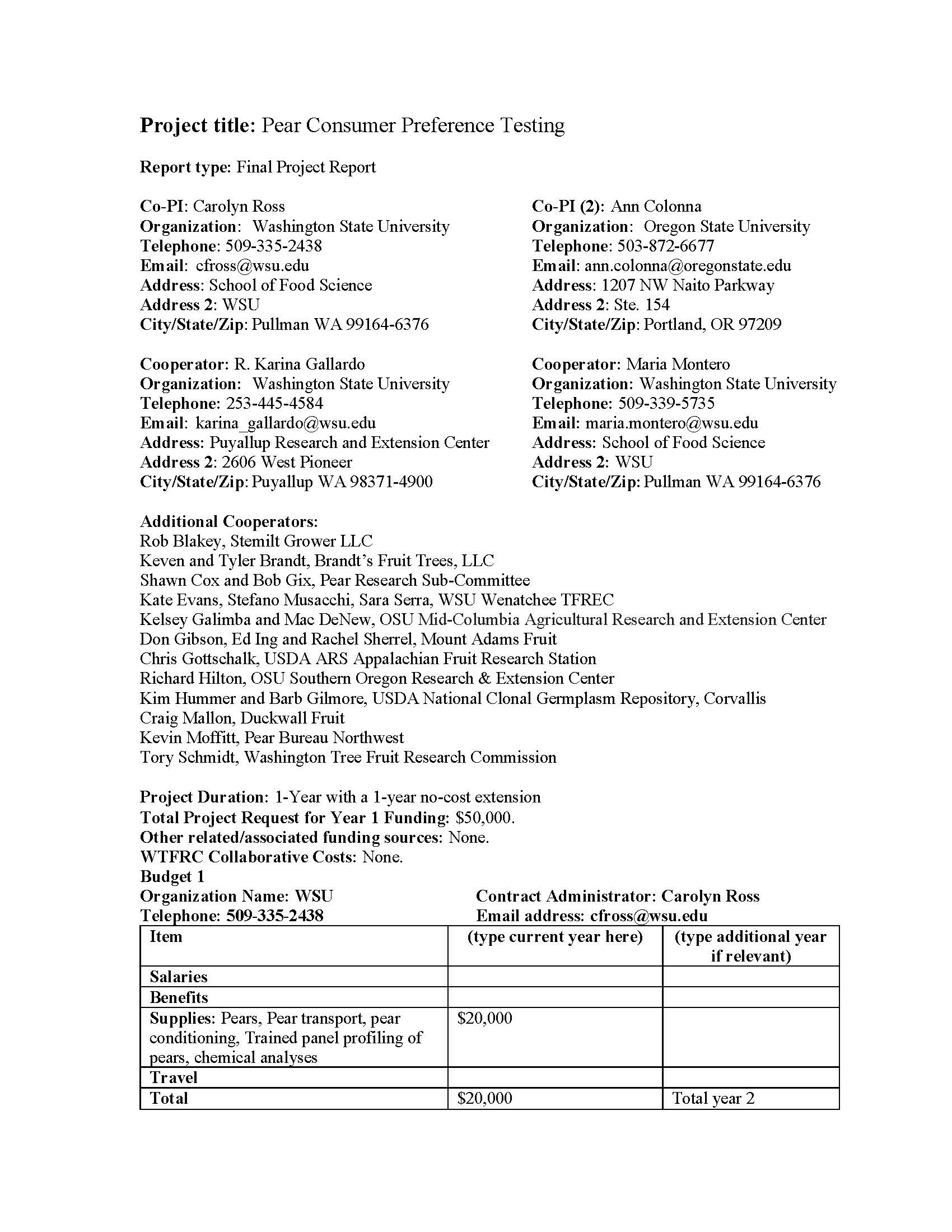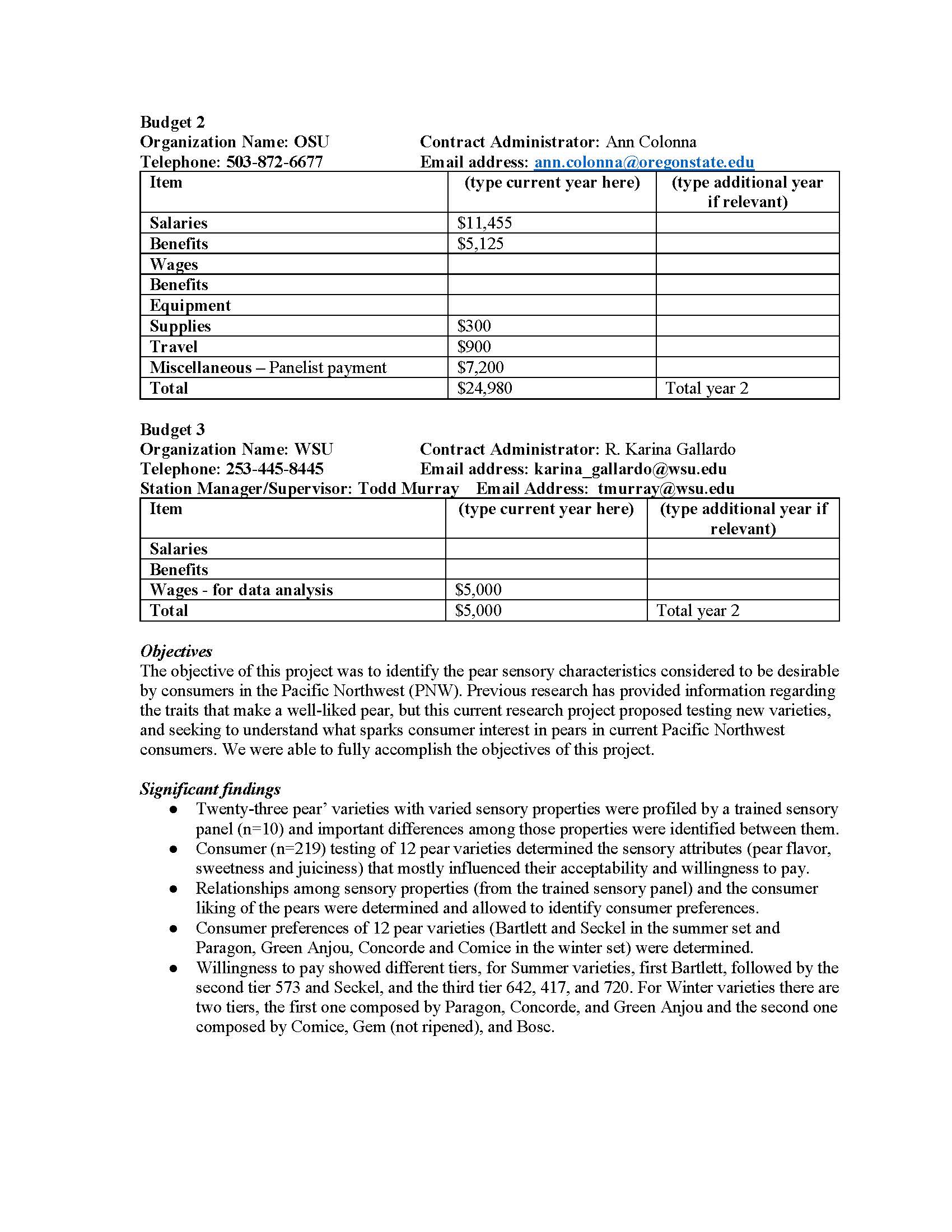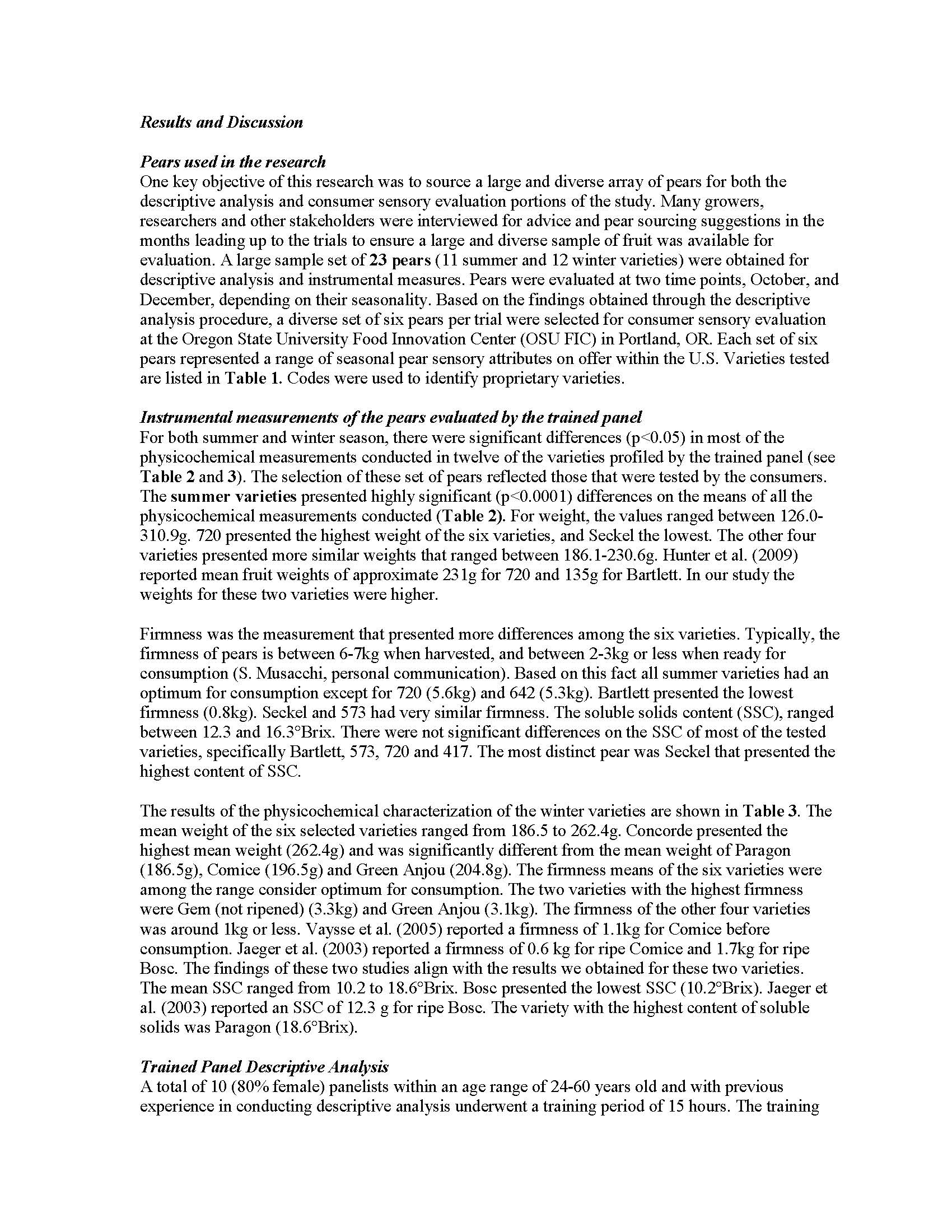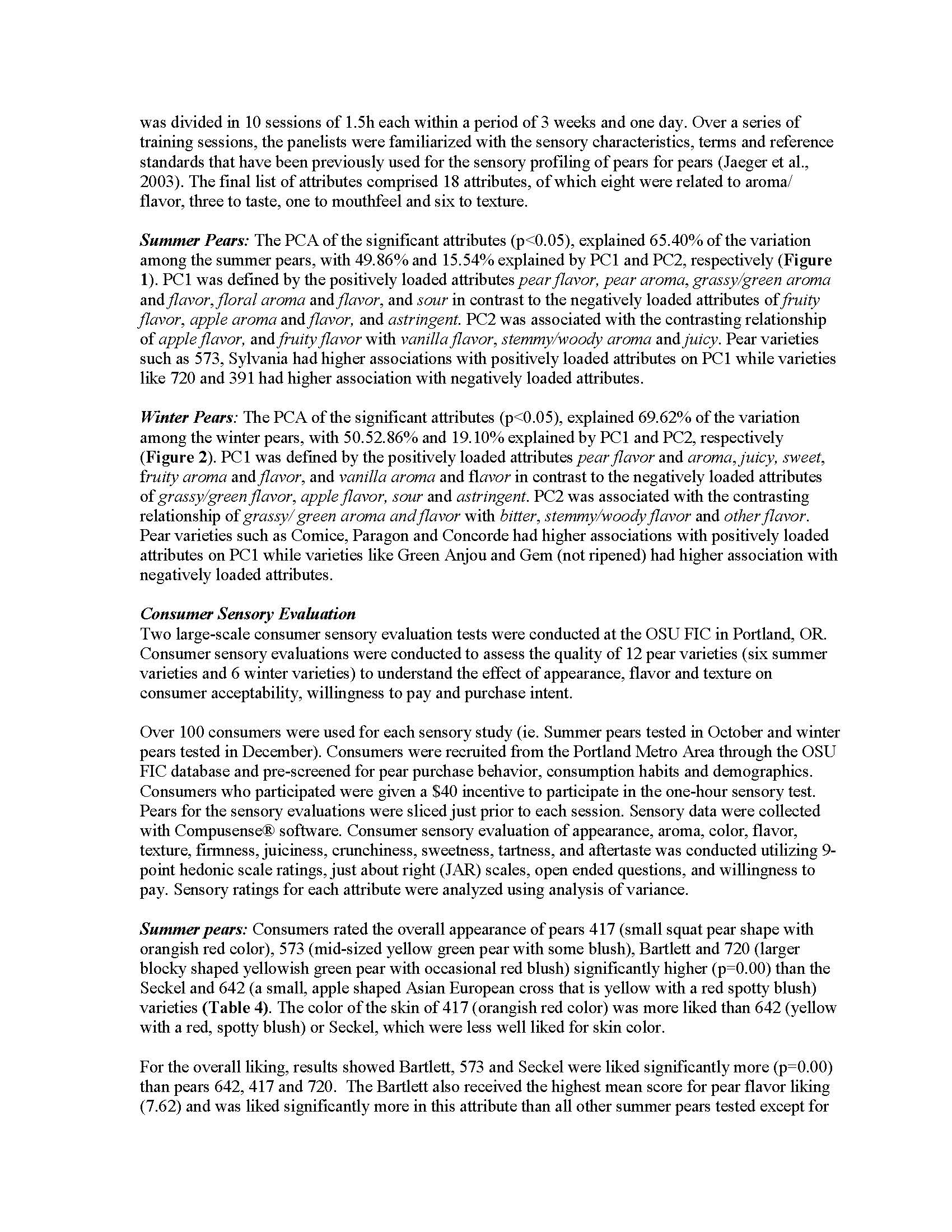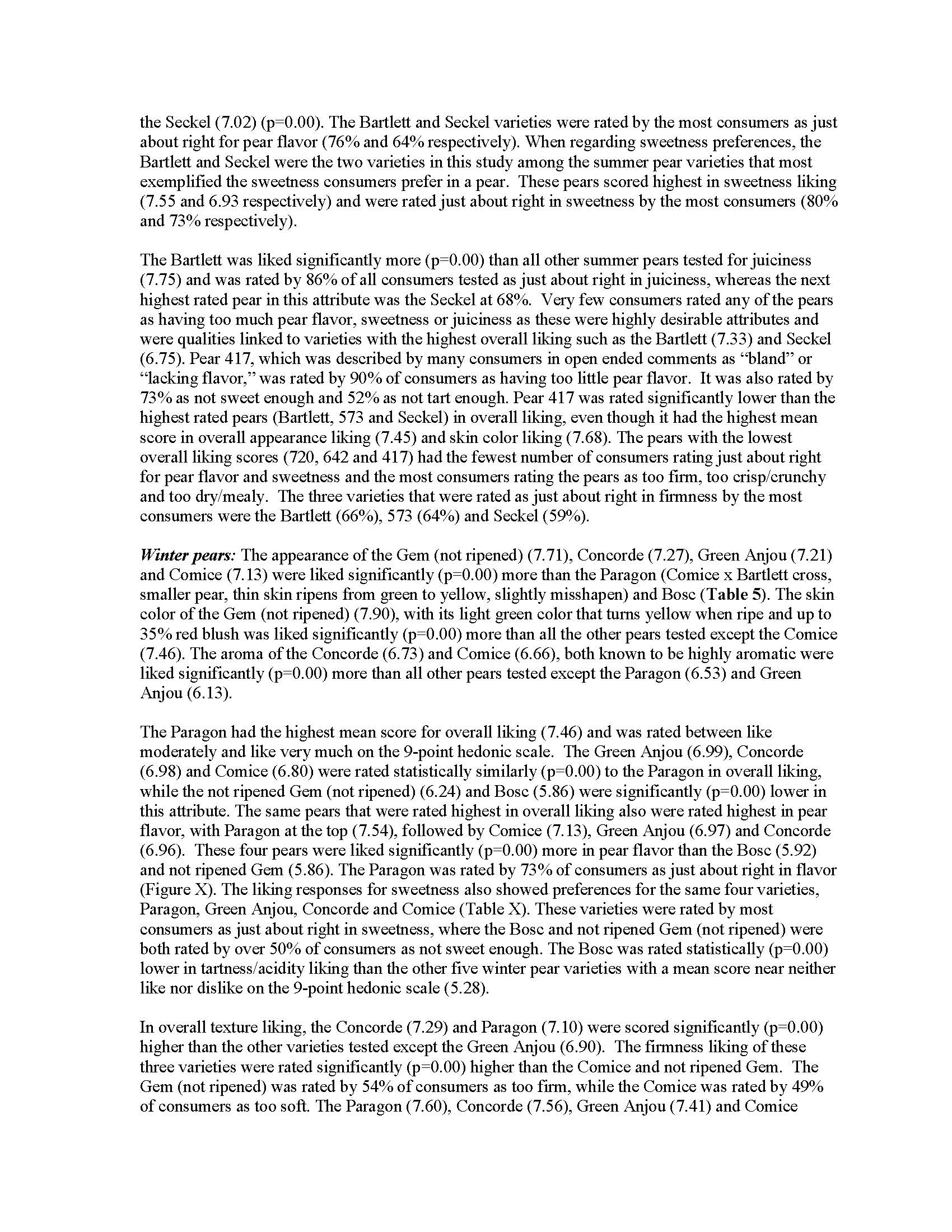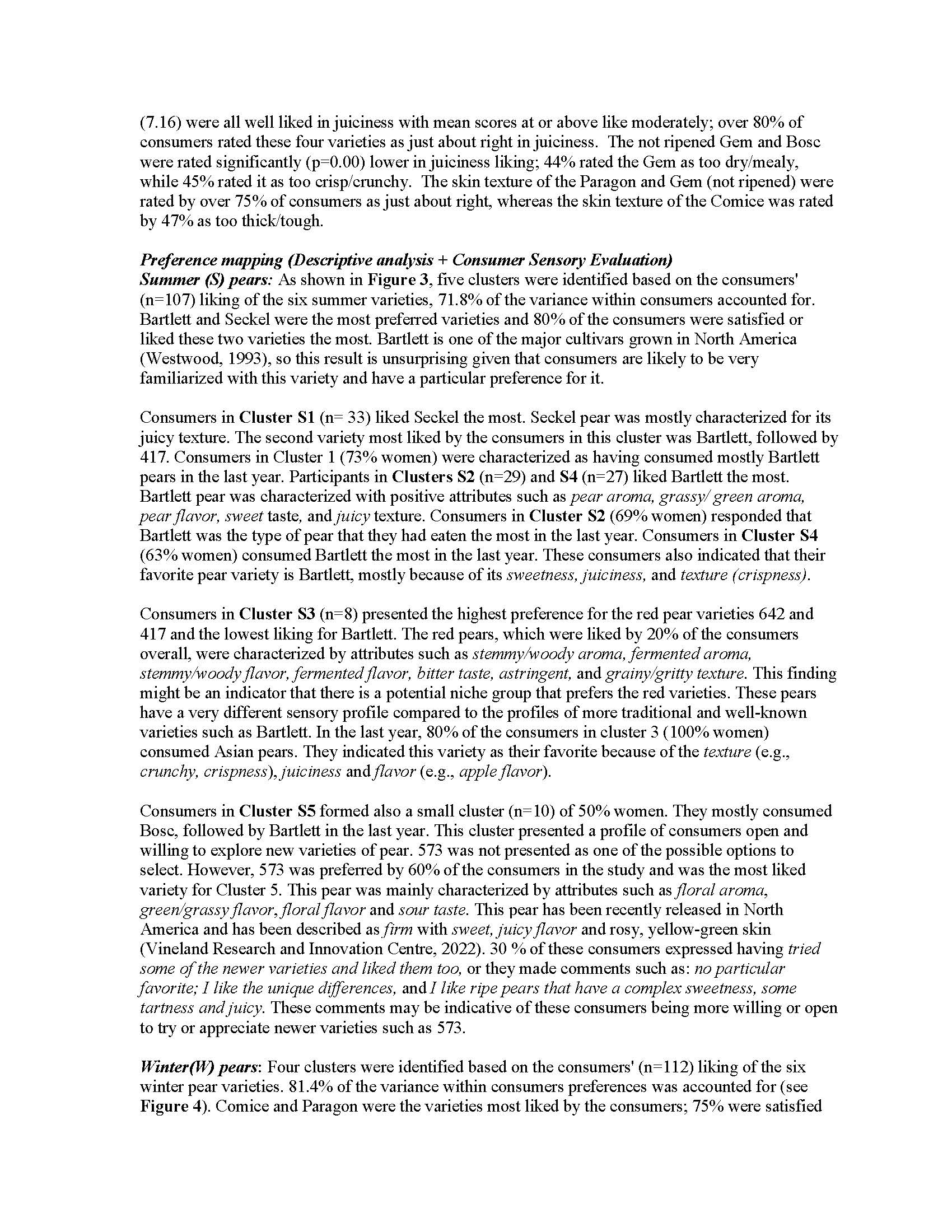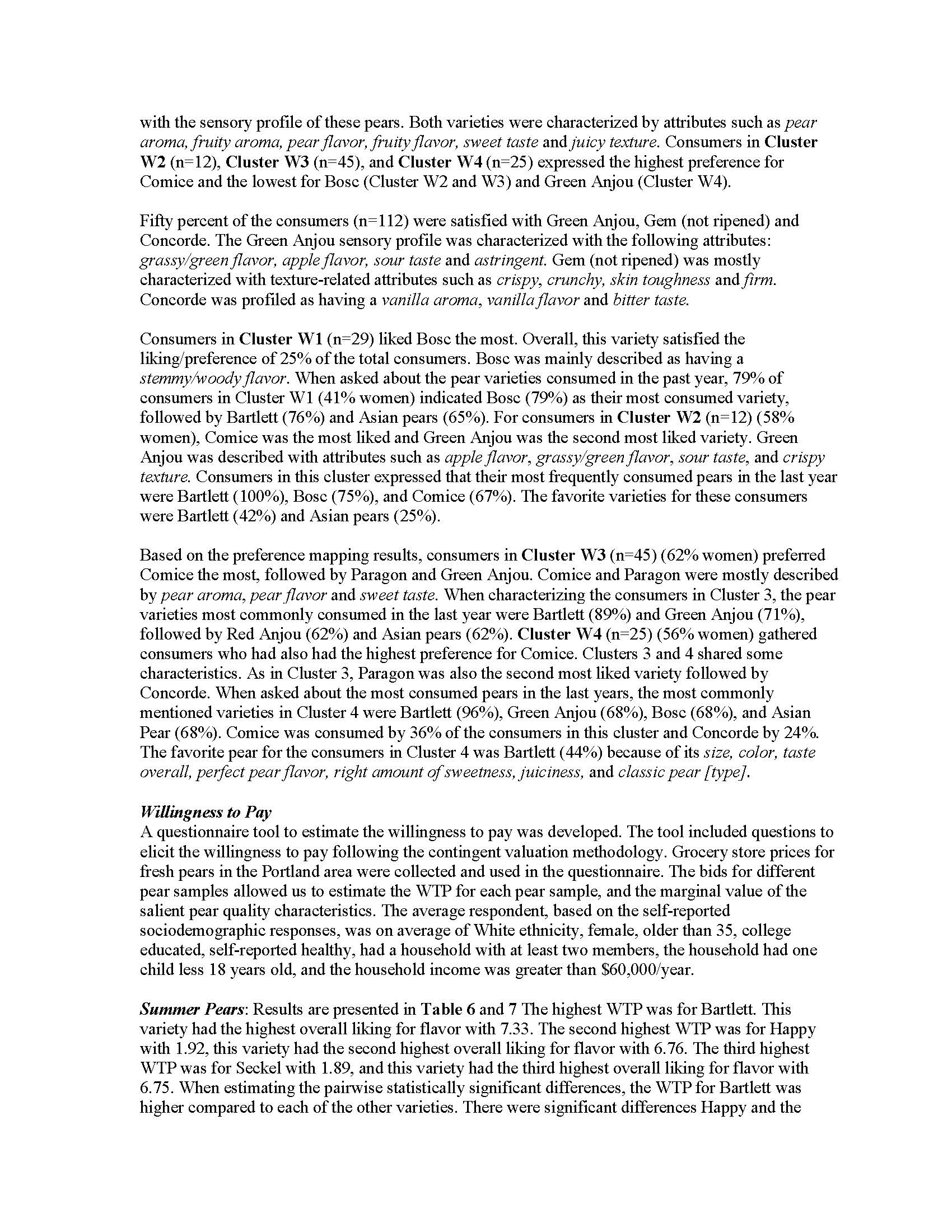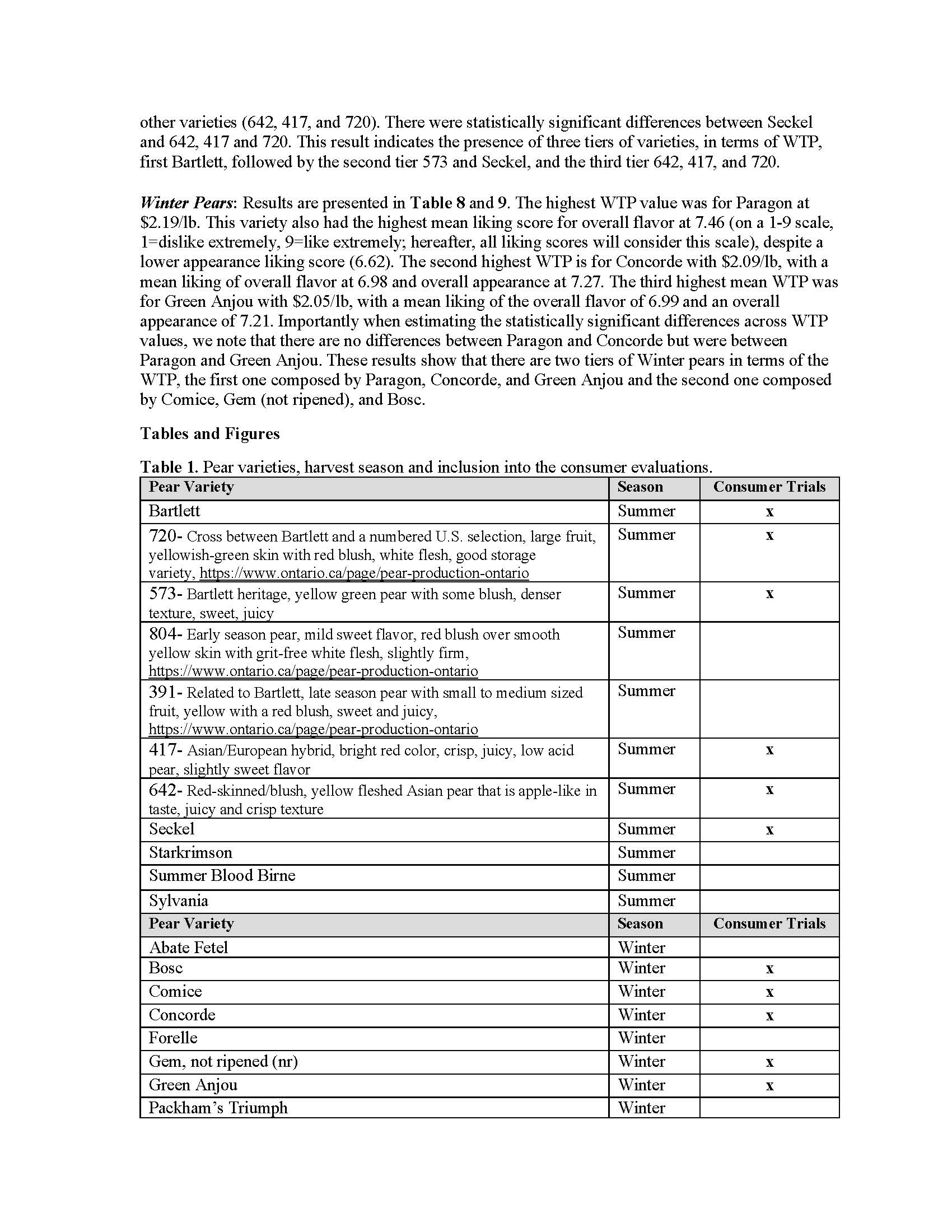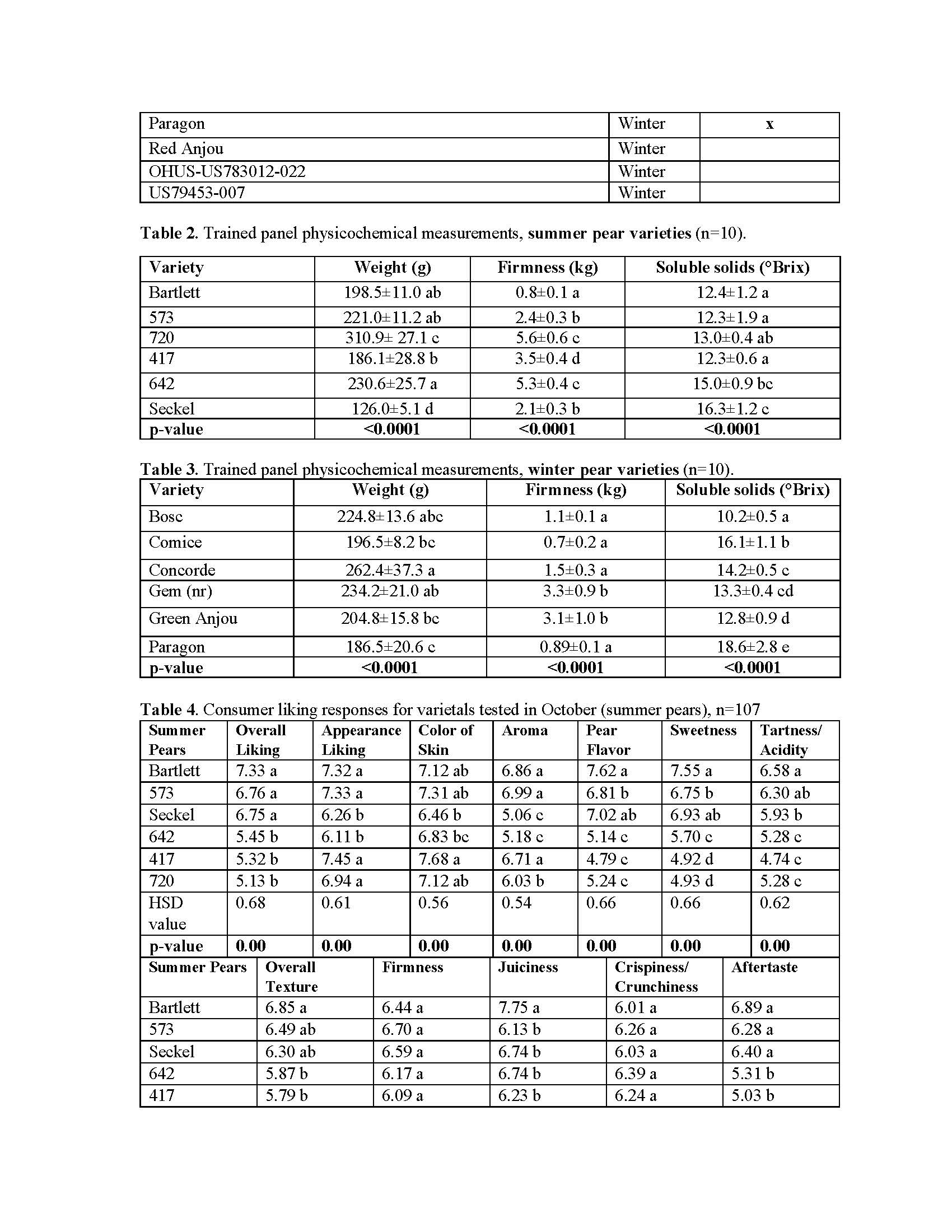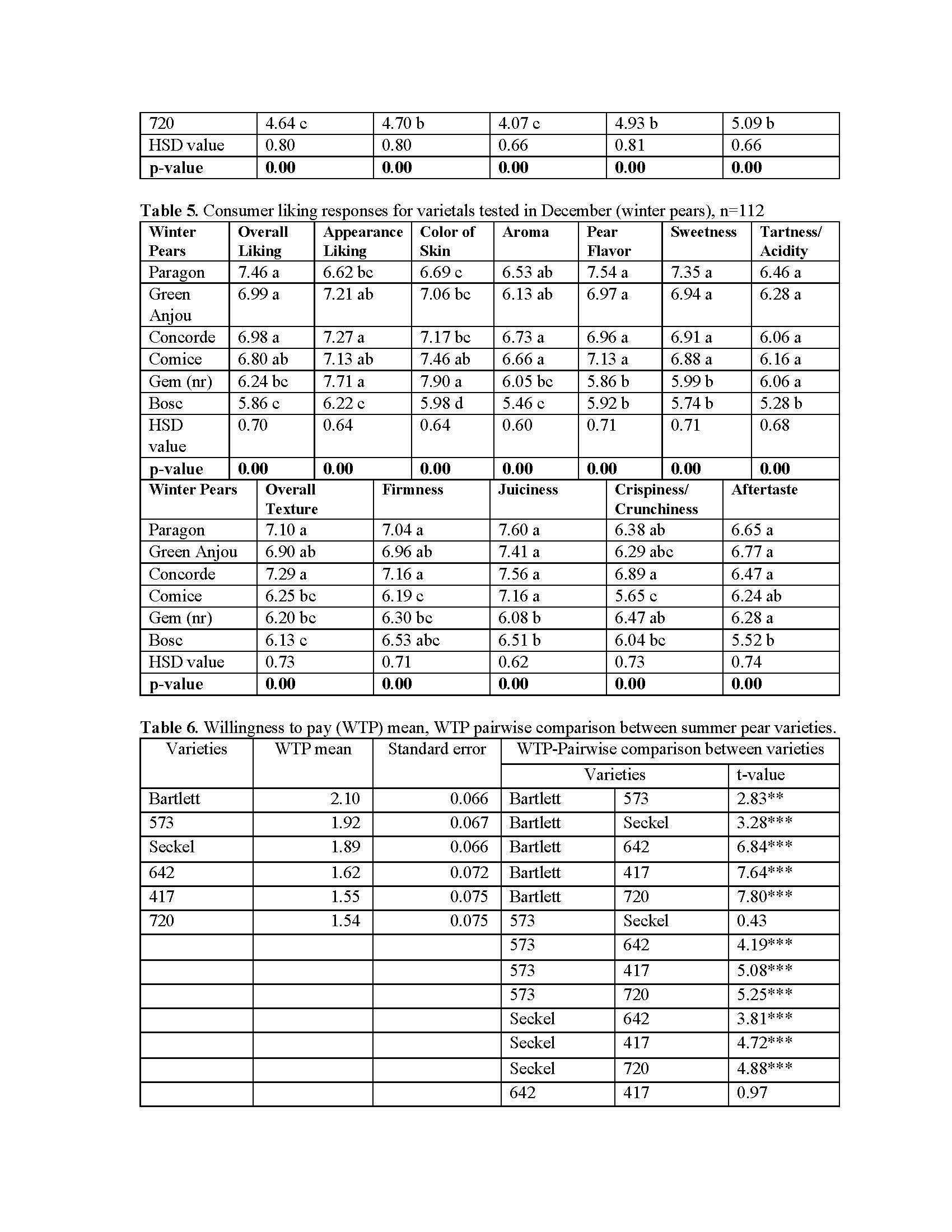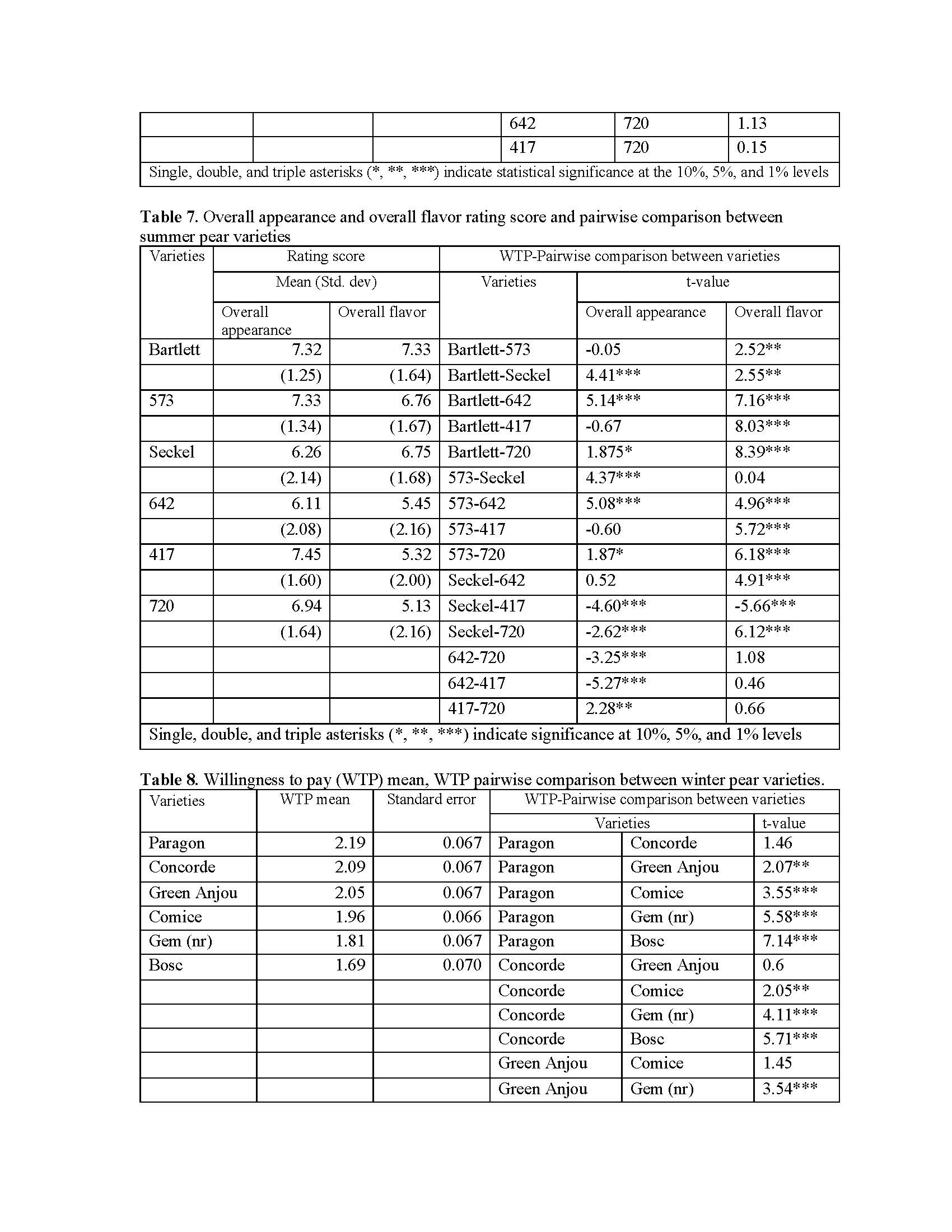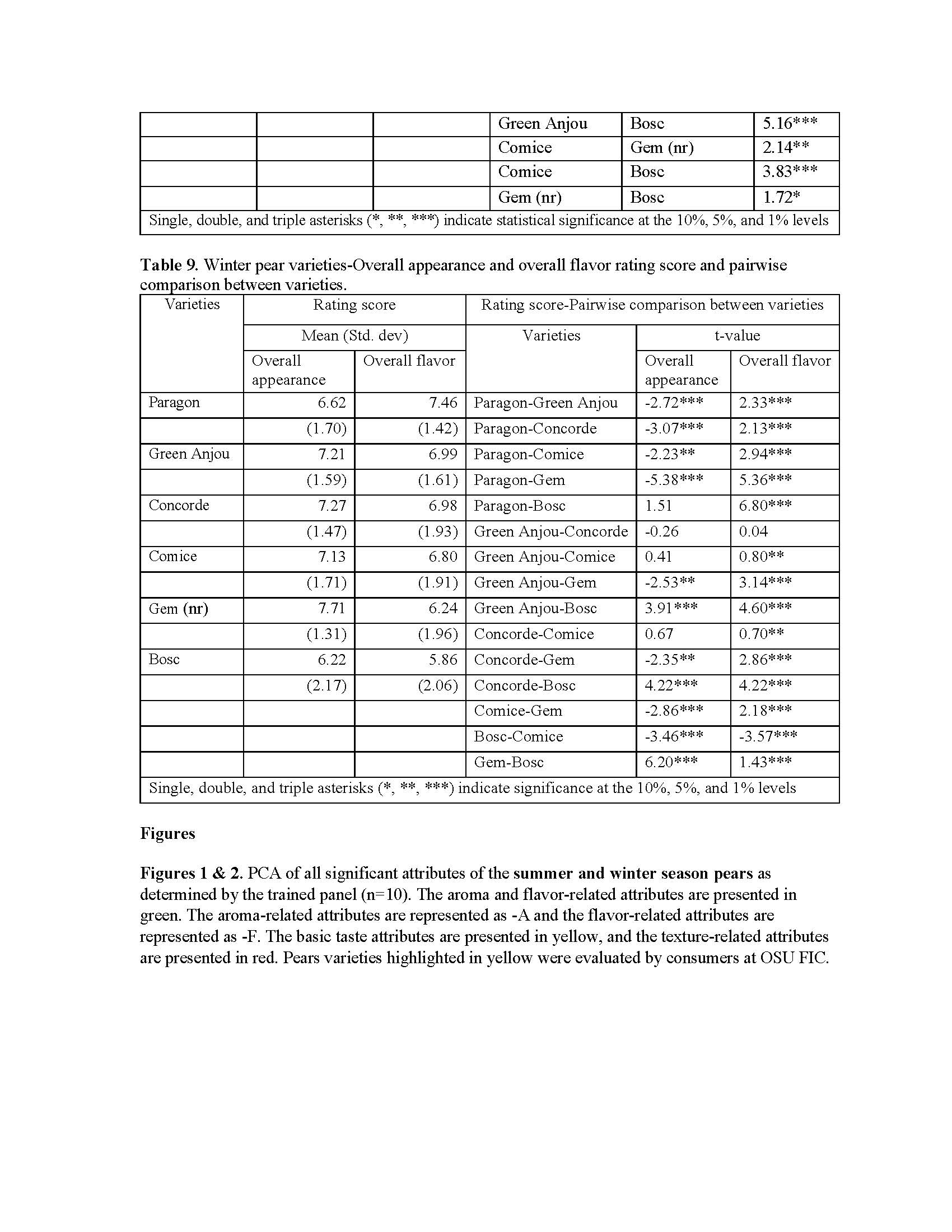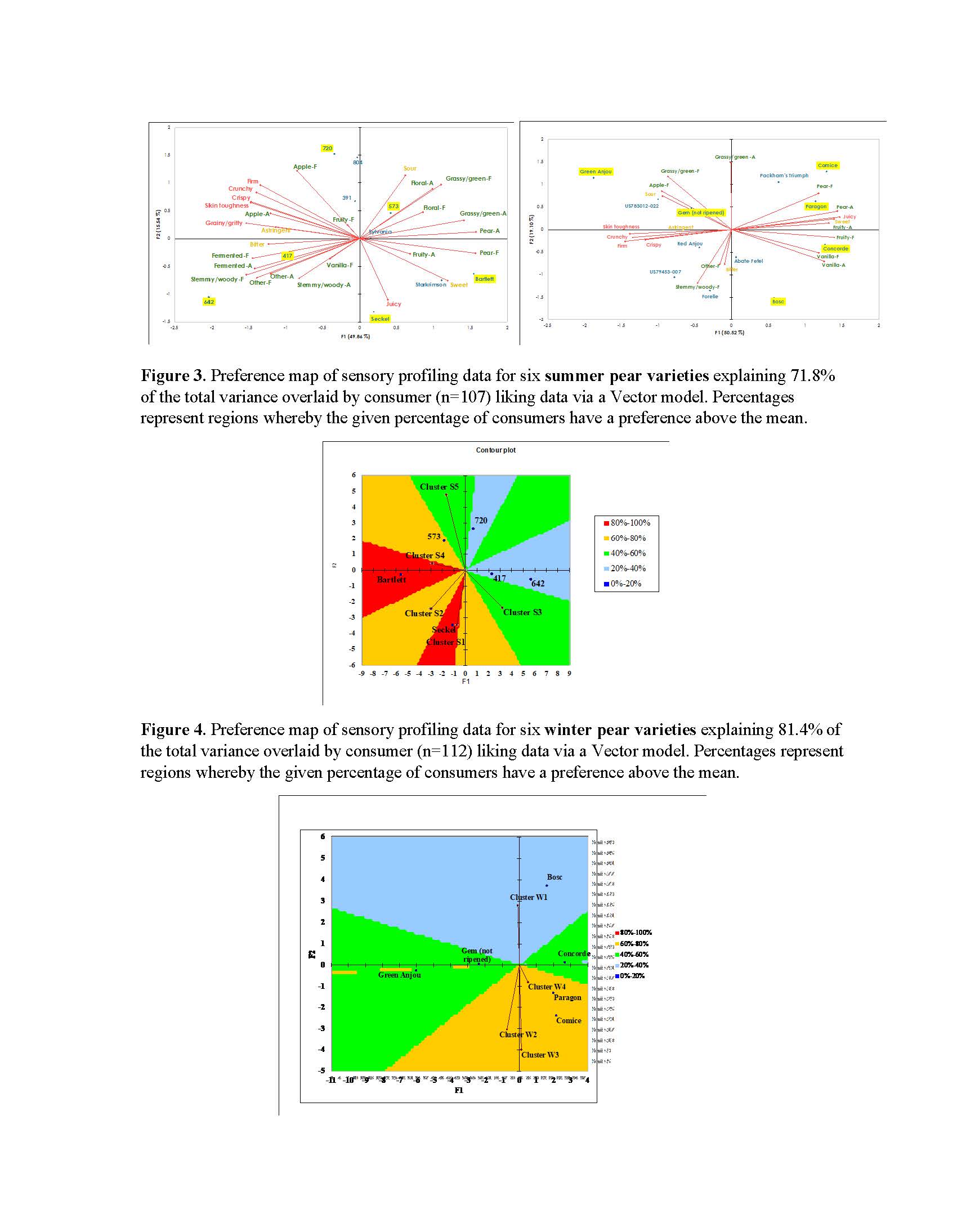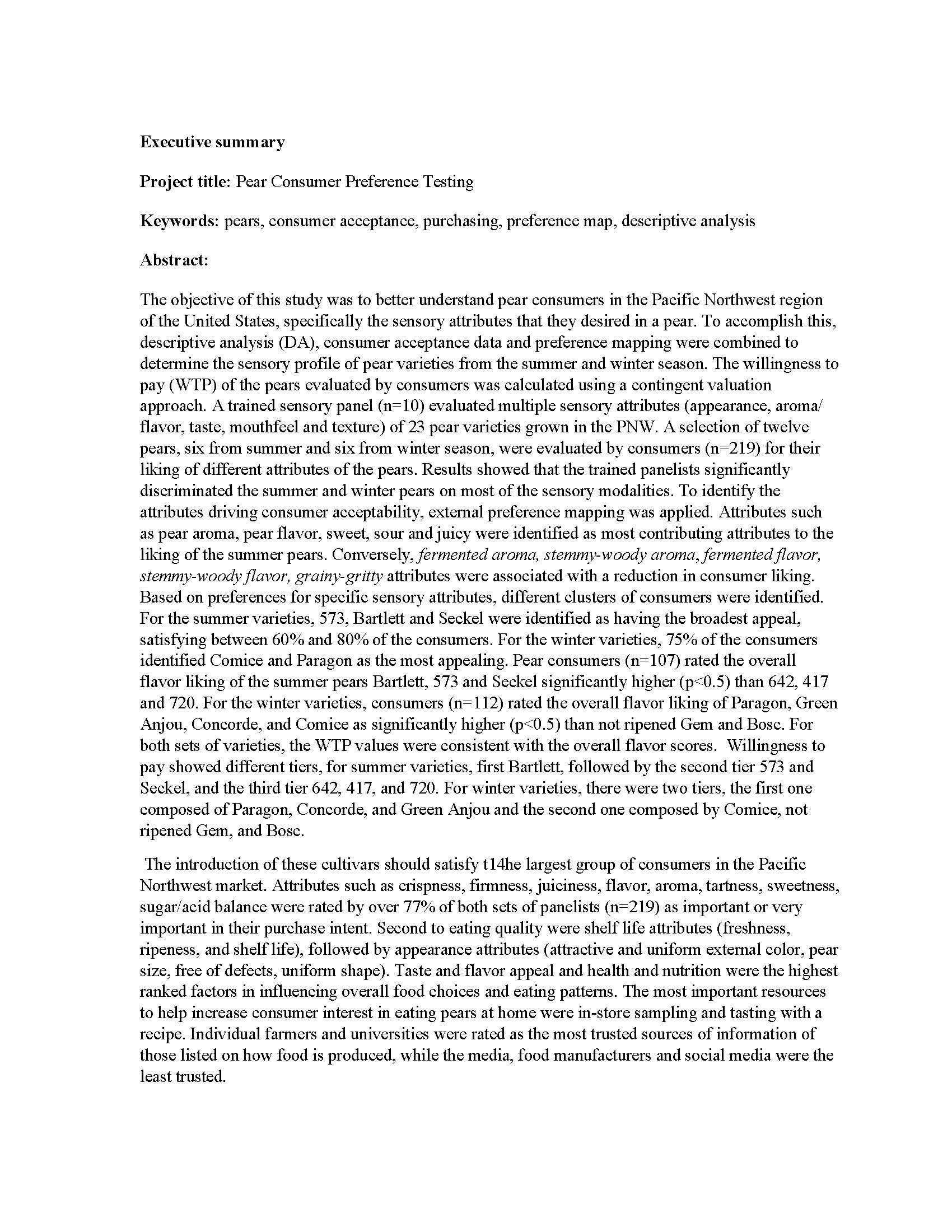Pear Consumer Preference Testing
Author: Carolyn Ross
Published: 2023
Summary: The objective of this study was to better understand pear consumers in the Pacific Northwest region of the United States, specifically the sensory attributes that they desired in a pear. To accomplish this, descriptive analysis (DA), consumer acceptance data and preference mapping were combined to determine the sensory profile of pear varieties from the summer and winter season. The willingness to pay (WTP) of the pears evaluated by consumers was calculated using a contingent valuation approach. A trained sensory panel (n=10) evaluated multiple sensory attributes (appearance, aroma/ flavor, taste, mouthfeel and texture) of 23 pear varieties grown in the PNW. A selection of twelve pears, six from summer and six from winter season, were evaluated by consumers (n=219) for their liking of different attributes of the pears. Results showed that the trained panelists significantly discriminated the summer and winter pears on most of the sensory modalities. To identify the attributes driving consumer acceptability, external preference mapping was applied. Attributes such as pear aroma, pear flavor, sweet, sour and juicy were identified as most contributing attributes to the liking of the summer pears. Conversely, fermented aroma, stemmy-woody aroma, fermented flavor, stemmy-woody flavor, grainy-gritty attributes were associated with a reduction in consumer liking. Based on preferences for specific sensory attributes, different clusters of consumers were identified. For the summer varieties, 573, Bartlett and Seckel were identified as having the broadest appeal, satisfying between 60% and 80% of the consumers. For the winter varieties, 75% of the consumers identified Comice and Paragon as the most appealing. Pear consumers (n=107) rated the overall flavor liking of the summer pears Bartlett, 573 and Seckel significantly higher (p<0.5) than 642, 417 and 720. For the winter varieties, consumers (n=112) rated the overall flavor liking of Paragon, Green Anjou, Concorde, and Comice as significantly higher (p<0.5) than not ripened Gem and Bosc. For both sets of varieties, the WTP values were consistent with the overall flavor scores. Willingness to pay showed different tiers, for summer varieties, first Bartlett, followed by the second tier 573 and Seckel, and the third tier 642, 417, and 720. For winter varieties, there were two tiers, the first one composed of Paragon, Concorde, and Green Anjou and the second one composed by Comice, not ripened Gem, and Bosc. The introduction of these cultivars should satisfy t14he largest group of consumers in the Pacific Northwest market. Attributes such as crispness, firmness, juiciness, flavor, aroma, tartness, sweetness, sugar/acid balance were rated by over 77% of both sets of panelists (n=219) as important or very important in their purchase intent. Second to eating quality were shelf life attributes (freshness, ripeness, and shelf life), followed by appearance attributes (attractive and uniform external color, pear size, free of defects, uniform shape). Taste and flavor appeal and health and nutrition were the highest ranked factors in influencing overall food choices and eating patterns. The most important resources to help increase consumer interest in eating pears at home were in-store sampling and tasting with a recipe. Individual farmers and universities were rated as the most trusted sources of information of those listed on how food is produced, while the media, food manufacturers and social media were the least trusted.
Keywords:

